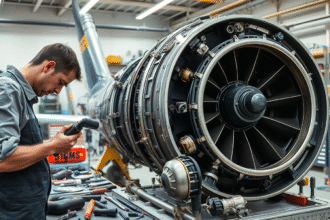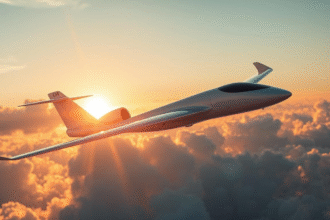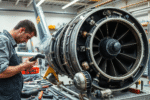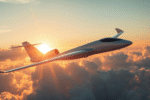Aviation relies heavily on airplane trecking for safe and efficient flight paths. I will dive into the details of this process. It’s linked to airport operations and the pilots’ critical role.
airplane trecking
The world of flight tracking is complex. It involves real-time monitoring and clear communication between air traffic control and pilots. Good airplane trecking is key to avoiding crashes, managing air traffic, and making flights smooth.
Key Takeaways
- Airplane trecking is a critical component of aviation.
- Flight tracking involves real-time monitoring and communication.
- Effective airplane trecking ensures safe and efficient flight operations.
- Air traffic control and pilots collaborate to manage air traffic.
- Airplane trecking is vital for preventing collisions.
The Fascinating World of Airplane Trecking
My adventure in airplane trecking started with a simple curiosity. I wanted to know more about flight paths and how airports work. This hobby lets me track aircraft, understand their routes, and guess when they’ll arrive or leave.
airplane trecking
What Drew Me to This Unique Aviation Hobby
The thrill of the unknown drew me to airplane trecking. I was eager to learn about air travel’s details. This hobby mixes my love for technology, geography, and flying.
How Tracking Flights Changed My Perspective on Air Travel
Tracking flights changed how I see air travel. I now appreciate the complexity of managing air traffic. Weather and air traffic control play big roles in flight paths. This makes air travel more interesting and less mysterious.
| Aspect | Before Airplane Trecking | After Airplane Trecking |
| Understanding of Flight Paths | Limited knowledge | In-depth understanding |
| Appreciation for Air Traffic Control | Casual awareness | Deep respect |
| View on Air Travel | Routine | Fascinating |
Through airplane trecking, I’ve found a new hobby. I also have a deeper respect for the aviation world.
My Essential Equipment for Successful Airplane Trecking
Airplane trecking is a rewarding hobby that offers a unique view of aviation. It’s essential to have the right tools for a fulfilling experience. I’ve learned this as I explore this fascinating world.
Digital Tools and Applications I Can’t Live Without
In today’s digital age, many tools and apps can enhance airplane trecking. I love using FlightAware and Flightradar24 apps. They give real-time flight information like paths, times, and more.
These apps have changed how I track flights. They keep me updated on aircraft movements. Whether at home or on the move, these apps help me monitor flights in real-time. This makes planning my trecking easier.
Physical Equipment Worth Investing In
While digital tools are key, physical equipment is also vital. For serious treckers, binoculars and a spotting scope are essential.
My Favorite Binoculars and Spotting Scopes
I use 7×50 magnification binoculars for distant aircraft views. They work well in various lighting. For closer looks, I have a 60mm spotting scope. It offers great magnification and clarity.
Camera Setup for Aviation Photography
I also enjoy taking high-quality aircraft photos. My camera setup includes a DSLR, a telephoto lens (at least 200mm), and a tripod. This helps me get sharp images of aircraft from far away.
| Equipment | Description | Usefulness |
| Flight Tracking Apps | Real-time flight tracking information | High |
| Binocularoculars | 7x magnification for observing aircraft | High |
| Spotting Scope | 60mm objective lens for detailed observations | High |
| DSLR Camera with Telephoto Lens | Capturing high-quality images of aircraft | High |
By using these digital tools and physical equipment, I get a full airplane trecking experience. It includes tracking, observing, and taking photos of aircraft.
airplane trecking equipment
Understanding Flight Patterns and Airport Operations
My journey into airplane tracking has made me very interested in flight patterns and airport operations. Watching aircraft movements closely, I started to see how complex these systems are.
How I Learned to Decode Runway Configurations
Learning to understand runway configurations is key to predicting where planes will go. I’ve figured out the different types of runways and their roles. Some airports have runways that cross each other, while others have them side by side.
Predicting Flight Paths Based on Weather Conditions
Weather conditions greatly affect flight paths. I’ve noticed how weather changes the routes planes take. For example, strong headwinds can make flights longer. But tailwinds can make them go straighter.
Reading Air Traffic Patterns Like a Pro
To get good at reading air traffic patterns, I studied how planes move at different times and in different weather. Knowing these patterns lets me guess when planes will arrive and leave. This makes tracking planes more fun for me.
Best Locations for Airplane Trecking in the United States
I’ve explored many places in the United States for airplane trecking. The country’s varied aviation scene offers lots of chances for hobbyists to enjoy their passion.
Major Airport Viewing Areas I’ve Discovered
Major airports are top spots for airplane trecking. Chicago O’Hare International Airport stands out with its clear views of planes. Los Angeles International Airport is also great, with the LAX Airline Terminal Viewing Area being a highlight.
Hidden Gems for Serious Plane Spotters
There are also hidden spots worth checking out. Teterboro Airport in New Jersey is a favorite for its close location to New York City and the variety of planes it sees. The Boeing Everett Factory in Washington is another gem, where you can see new planes being made.
My Seasonal Guide to Different Tracking Locations
The best spots for airplane trecking change with the seasons. Summer is perfect for airshows and festivals, like the one at Oshkosh Regional Airport in Wisconsin. Winter is great for places like Miami International Airport in Florida, where it’s warmer and planes keep flying.
Knowing when to go and what events are happening helps make the most of your airplane trecking adventures.
How I Track Commercial Flights Like a Professional
I’ve developed a way to track commercial flights like a pro. I know all about flight numbers and callsigns. I also use top-notch flight tracking software.
Deciphering Flight Numbers and Callsigns
Learning to understand flight numbers and callsigns is key. Flight numbers are a mix of letters and numbers that identify a flight. For example, “AA” means American Airlines, making tracking easier.
I also watch the callsign. It’s used for radio talks between pilots and air traffic control.
Mastering Flight Tracking Software and Apps
To track flights well, you need to know flight tracking software and apps. Sites like FlightAware and Flightradar24 give live updates on flights. I’ve learned to use these tools to guess where flights will go.
It’s all about knowing the features and filters these tools have. Like tracking certain airlines or routes.
My System for Predicting Arrivals and Departures
Predicting arrivals and departures is a mix of knowing schedules, weather, and air traffic data. I look at past flight data and live updates to guess flight times. This helps me plan or work with airport staff.
With these skills, I’m great at commercial flight tracking. It lets me enjoy my hobby and stay up-to-date on flights I’m interested in.
Connecting with Airport Operations and Personnel
Exploring airplane tracking, I learned how key it is to connect with airport teams. This connection has deepened my grasp of airport life. It also gave me insights into the world of aviation.
Building Relationships with Ground Crew
My journey in airplane tracking has been enriched by forming bonds with ground crew. They ensure planes move smoothly on the ground. They’ve shared their knowledge, helping me understand airport rules better.
Through them, I’ve learned about aircraft handling, safety, and the challenges airports face. Their stories have given me a new perspective on the work they do.
What I’ve Learned from Air Traffic Controllers
Air traffic controllers are vital in managing air traffic. Talking to them has been incredibly enlightening. They’ve shown me how they manage flights, prioritize them, and handle emergencies.
Their knowledge has made me appreciate the complexity of air traffic management. It’s clear how critical good communication is for safe and efficient flights.
Respectful Communication Practices at Airports
When talking to airport staff, it’s vital to be respectful. This means following security rules, respecting their privacy, and not interrupting their work. Being considerate and professional has helped me build strong relationships with them.
These connections have greatly enriched my experience in airplane tracking. By working with ground crew and learning from air traffic controllers, I’ve gained a deeper understanding of aviation. I’ve also seen the value of aviation communication.
The Art of Military Aircraft Trecking
I’ve grown to love tracking military flights and figuring out what kind of planes they are. Military aircraft tracking is a special hobby. It needs knowledge, skills, and the right tools.
My Approach to Tracking Military Flights
I use special software and apps to track military planes. These tools give me real-time info on flight paths, altitudes, and speeds. This helps me predict and track military planes’ movements.
Special Events and Air Shows Worth Attending
Going to air shows and special events is thrilling. Events like the Thunder Over the Desert air show let you see military planes up close. These events show off military planes’ skills and let you meet the people who fly them.
Distinguishing Military Aircraft Types and Missions
Knowing the different military planes and their jobs is key. For example, fighter jets like the F-16 fight in the air, while planes like the C-130 carry stuff. Knowing this helps me guess where they’ll fly next.
| Aircraft Type | Mission | Notable Features |
| F-16 Fighting Falcon | Air-to-air combat | High maneuverability |
| C-130 Hercules | Transport and logistical support | Four turboprop engines |
| A-10 Thunderbolt II | Close air support | Durable and heavily armored |
With the right tools, knowledge, and experience, tracking military planes is a great hobby. Whether it’s following flights or going to air shows, there’s always something new to learn in military aviation.
My Journey to Connecting with Pilots and Aviation Professionals
Exploring airplane tracking led me to value connections with pilots and aviation experts. This connection has greatly improved my grasp of flight operations. It also gave me insights into the aviation world.
Networking in the Aviation Community
I’ve been lucky to attend many aviation events and conferences. Networking in the aviation community has opened new doors for me. I’ve also joined online forums and groups, where I share knowledge and experiences with others.
Valuable Insights I’ve Gained from Professional Pilots
Talking to professional pilots has given me insights that improved my flight tracking skills. They shared their experiences, challenges, and tips. These have helped shape my approach to tracking airplanes.
How Pilots View Flight Trackers
I wanted to know how pilots see flight trackers. Through interviews and discussions, I found out. Pilots see flight trackers as useful tools for safety and efficiency. But they also stress the need for accurate data and privacy.
Connecting with pilots and aviation professionals has been a rewarding journey. It has given me a deeper understanding of the aviation community and its practices.
Photography Tips from My Airplane Trecking Experience
My adventures in airplane trecking have taught me a lot about photography. I’ve learned how to get the best shots of planes taking off and landing. I also know how to deal with tricky lighting at airports and how to edit my photos.
Capturing the Perfect Take-off and Landing Shots
Getting great shots of planes taking off and landing is all about timing and skill. I find the best spots to take pictures and use a telephoto lens for close-up shots. I wait for the plane to move into the right position and then snap the photo, freezing the moment.
How I Handle Challenging Airport Lighting Conditions
Lighting at airports can be tough, changing from bright sun to complex night lights. I adjust my camera settings to get the best photos in any light. I use manual mode to control the exposure and ISO. Polarizing filters help reduce glare from surfaces.
My Post-Processing Workflow for Aviation Images
After taking photos, I enhance them without losing their true look. I use Adobe Lightroom to tweak the exposure, contrast, and color. My goal is to make the photos look vibrant and real, showing the beauty of flying.
By following these tips, my aviation photos have gotten much better. I’m able to capture the fast-paced world of air travel in a unique way.
Legal Considerations and Etiquette I Follow as an Airplane Trecker
As an airplane trecker, I’ve learned a lot about aviation laws. It’s key to know these rules to enjoy this hobby safely.
Navigating Airport Security Regulations
Airport security is very important. As a trecker, I must follow all security rules. This means knowing where I can and can’t go, listening to airport staff, and being careful around cameras and gates.
Respecting Privacy and Safety Boundaries
It’s vital to respect others’ privacy and safety. I don’t enter restricted areas or take photos of sensitive stuff. I also watch my surroundings to avoid dangers. Plus, I don’t take pictures of people without asking first.
International Differences I’ve Encountered in Plane Spotting Laws
Plane spotting laws change a lot from country to country. Some places have strict photo rules, while others limit certain gear. Knowing these differences is key when traveling and spotting planes abroad.
| Country | Plane Spotting Laws | Restrictions |
| United States | Generally permissive | Some restrictions near sensitive areas |
| United Kingdom | Regulated by the UK Aviation Authority | Restrictions on photography near certain airports |
| Australia | Strict regulations on photography | Prohibited areas around airports |
By following these legal tips and etiquette, I can enjoy airplane trecking. I also help keep everyone safe and private.
Conclusion: Taking Your Airplane Trecking Passion to New Heights
Reflecting on my airplane trecking journey, I see the joy it has brought. It has opened doors to new experiences and connections. For beginners, I say dive into this world. Every flight you track grows your love for aviation, with its endless variety and stories.
Watching a commercial airliner take off or tracking a military aircraft is exciting. The world of airplane trecking is vast and full of surprises. Let’s explore this exciting realm together, sharing insights and learning from each other. As we grow our passion, we deepen our understanding of aviation and build a community that loves flight.
FAQ
What is airplane trecking?
Airplane trecking, also known as plane spotting, is a hobby. Enthuisasts track and observe aircraft. They do this at airports or other aviation spots.
What equipment do I need for airplane trecking?
You’ll need binoculars, spotting scopes, cameras, and apps. These help track aircraft movements.
How do I track commercial flights?
Use apps like FlightAware or Flightradar24. They show flight numbers, times, and aircraft types in real-time.
What are the best locations for airplane trecking in the United States?
Top spots include big airports like Atlanta, Los Angeles, and Chicago O’Hare. Also, try smaller airports and aviation events.
How do I connect with pilots and aviation professionals?
Attend aviation events and join online forums or social media groups. This helps you connect with pilots and experts.
What are the legal considerations for airplane trecking?
Know airport security rules and respect privacy and safety. Also, understand plane spotting laws worldwide for a safe hobby.
Can I track military aircraft?
Yes, you can track military planes with special resources. But, know the rules and restrictions for military aviation.
How can I improve my aviation photography skills?
Practice taking photos of take-offs and landings. Learn to handle light and develop a workflow for aviation photos.







